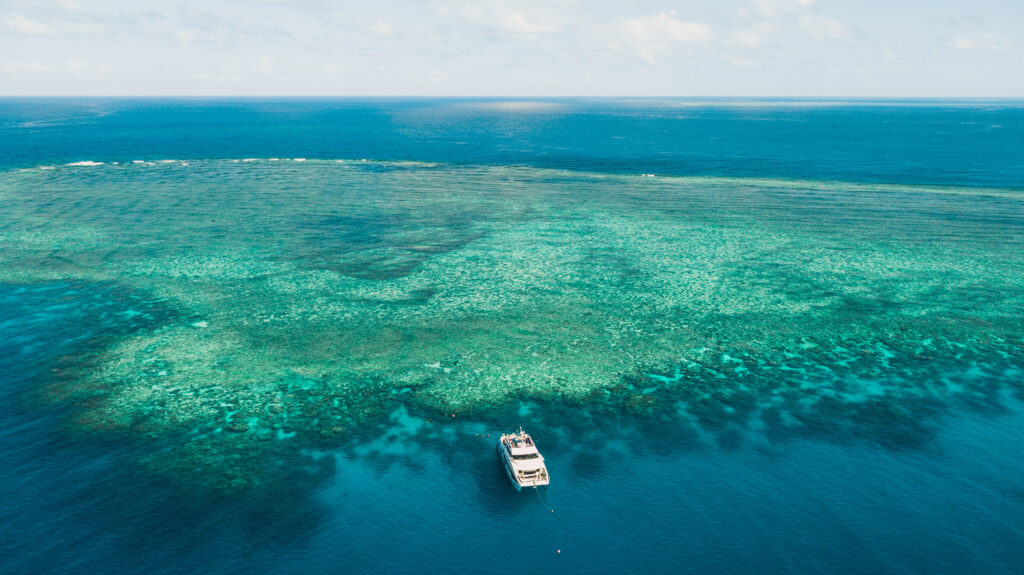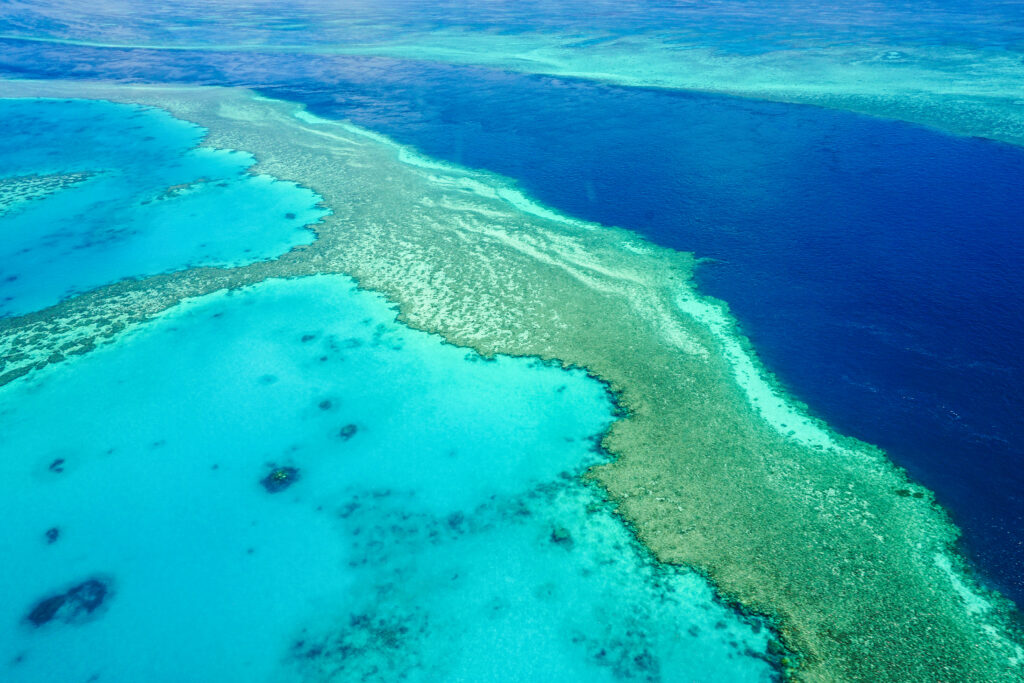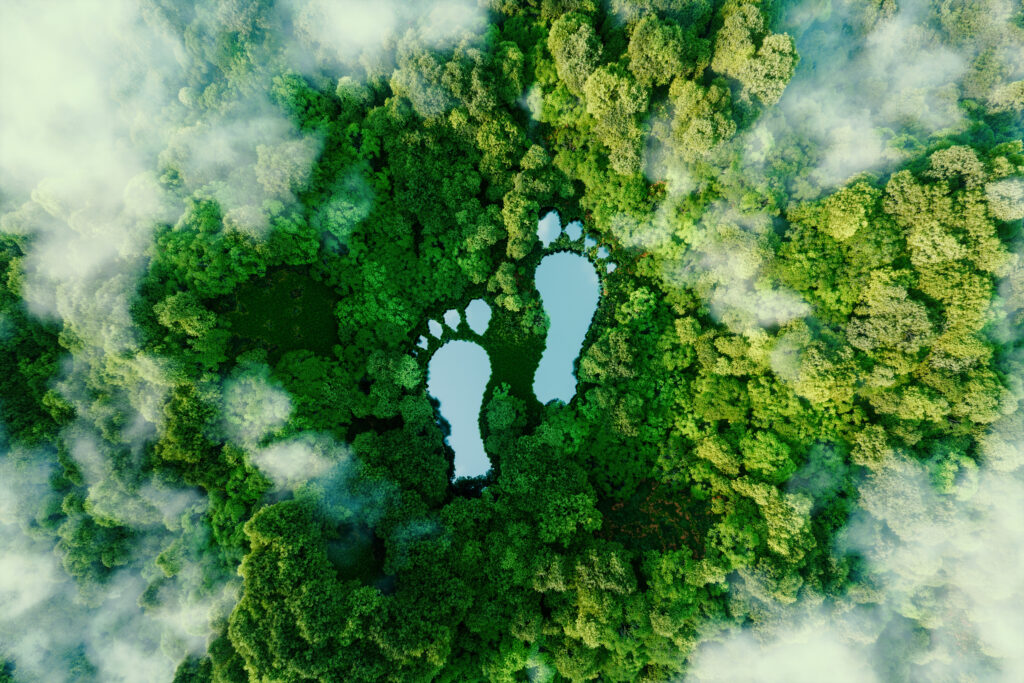
Australia's Great Barrier Reef is increasingly suffering the effects of global warming and human development, to the point where it's withering away in plain sight. Yet there is still time to take action to save it.
Australia's Great Barrier Reef: an ecological treasure takes stock

Australia's Great Barrier Reef is suffering from three main threats: bleaching, the invasion of harmful species and human activity. On a global scale, coral reefs are disappearing, leading to the disappearance of several species of coral and other marine life that call the reef home, as well as significant socio-economic damage. According to the NGO WWF, the Great Barrier Reef is worth 6 billion euros a year to the Australian economy, both through fishing and tourism. In fact, the Great Barrier Reef, a UNESCO World Heritage Site, helps make Australia a top tourist destination. Its destruction is therefore a catastrophe for both biodiversity and mankind.
Coral reef bleaching in Australia
The most visible threat to Australia's Great Barrier Reef is coral bleaching. In fact, 91% of the Great Barrier Reef has undergone bleaching: a direct consequence of global warming.
Corals are complex animals, living in symbiosis with algae called zooxanthellae. In other words, coral is home to algae, which supply at least 75% of its energy needs through the process of photosynthesis. Without these algae, coral would be unable to meet its food requirements. In fact, it's these colorful algae that give corals their color. So, coral bleaching is simply due to the disappearance of these vital algae.
And if these colored algae leave the corals, leaving them as white as snow, it's because they are victims of an excessive proliferation of bacteria and viruses. Indeed, with global warming, water temperatures are rising ever higher, encouraging the multiplication of these pathogenic organisms.
Coral bleaching is therefore not a gradual phenomenon, but rather occurs in waves, following the various heat waves. Australia's Great Barrier Reef has already experienced several major bleaching episodes, notably in 2016, 2017, 2020 and 2022. Fortunately, bleaching does not mean the immediate death of corals, and algae can sometimes colonize them again. However, these increasingly frequent and intense heat waves are killing corals. The facts are alarming: over the last 25 years, half the corals in the Great Barrier Reef have died.
Invasion of harmful species
Australia's coral reef also faces more natural threats. There are several species known as corallivores: animals that feed on coral. Among these, one in particular is very dangerous: theAcanthaster planci, more commonly known as the crown of thorns. This voracious starfish feeds almost exclusively on coral. The only problem is that it is particularly invasive. One female lays several tens of millions of eggs per season! So, while this corallivorous species usually integrates perfectly into the reef's equilibrium, since the early 2000s its proliferation has gotten completely out of hand, and we don't really understand why. All we know is that the crown-of-thorns is wreaking havoc on coral reefs.
The impact of human activity
Many human activities are also responsible for the disappearance of Australia's coral reefs. Dredging, i.e. the extraction of material from the seabed, causes sediment to drift over dozens of kilometers. This pollutes the coral, and the algae that live in symbiosis with it are no longer able to photosynthesize.
Australia is also home to an increasing number of huge industrial harbours, whose size and intensity of traffic disrupt the fragile balance of the coral. Agriculture, meanwhile, tends to pollute reef water. Its fertilizer discharges considerably increase the nutrients present in the water, thus encouraging the proliferation of species that are sometimes harmful to the massif. Finally, fishing can also cause damage to the reef, as well as harming other species, including collisions with large marine mammals, since Australia is one of the world's best whale-watching spots.
Solutions to save Australia's Great Barrier Reef

Of all the threats to Australia's Great Barrier Reef, one is particularly dangerous: reef bleaching, caused by global warming. As ocean heat waves become stronger and more frequent, coral may never recover. The first step towards saving coral reefs is therefore to reduce your ecological footprint.
To start with, you can take a step back from your impact by calculating your carbon footprint. This measure calculates the quantity of greenhouse gases produced by a human activity. There are online tools, such as the ADEME tool, which allow you to calculate the carbon footprint of your personal lifestyle, using a questionnaire. This is an interesting first step in reducing our carbon footprint, since it points the finger at some of our daily habits that contribute most to global warming.
More generally, the first step towards reducing our carbon footprint is to use low-carbon modes of transport wherever possible. In France, transport, and mainly the car, accounts for almost half of allCO2 emissions. The car is not the vehicle that produces the most greenhouse gases per kilometer, but it is by far the mode of transport most used by the French, which puts it at the top of the podium. Air travel accounts for 2.5% of global emissions. Favoring 0-carbon means of locomotion such as walking or cycling for short everyday journeys is therefore essential. For vacations, we prefer to travel without planes, by train, bus or sailboat.
But it's not just our personal transport that's important, as our daily consumption of food, textiles, household goods and other products also involves transport, often far in excess of our daily journeys. So, one of the best ways to reduce our carbon footprint, and preserve the Great Barrier Reef, is to consume locally. For food, this means turning to local farmers' markets. For fashion, we turn to the many regional designers, and keep our clothes for as long as possible.
Another major source of greenhouse gas emissions is energy. Simple renovations to your home, without going so far as to turn it into a high-tech ecological house, can prevent it from becoming an energy sieve. Better still, this investment will save you money on your energy bills! One renovation that has a drastic impact on energy consumption is toinsulate your attic and basement. You can save up to 30% in energy costs - a huge gain!
Finally, to take things to the next level, there's nothing like supporting associations fighting to save the coral reef in Australia. You can make a one-off or monthly donation, or volunteer with the association. WWF is one of the NGOs most involved in Great Barrier Reef conservation, through its "Fight for the Reef" program, launched in 2013. The WWF is putting pressure on the Australian government, to the point of having obtained the cancellation of the construction of mega-ports in the vicinity, and a ban on the dumping of dredging sludge on the reef, which was previously a widespread practice.


